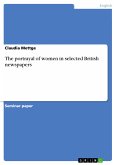Seminar paper from the year 2008 in the subject English Language and Literature Studies - Other, grade: 1,0, University of Koblenz-Landau, language: English, abstract: Table of Contents 1)Introduction 2)Dr. Jekyll vs. Mr. Hyde 3)Dr. Jekyll´s motivation 4)Analysis of the relationship between Dr. Jekyll and Mr. Hyde 5)Conclusion Bibliography 1) Introduction (Extract) In the 19th century published cases of both dual and multiple personalities were accumulated, for instance that of Mary Reynolds, who could have been a model for Robert Louis Stevenson´s The Strange Case of Dr. Jekyll and Mr. Hyde. In parallel to these publications a new interest in supernaturalism, excitement and drama developed. Gothicism as well as duality are themes which Stevenson had long been trying to write about and emerge in lots of his other writings, such as Olalla, The Body Snatcher and The Dynamiter. But the psychic conflict of doubles found its most “explicit treatment” in The Strange Case of Dr. Jekyll and Mr. Hyde (1886), which also “endures as a landmark in the evolution of psychological fiction”. Even the names of ´Jekyll´ and his alternating personality ´Hyde´ have become a kind of allegory for “any homicidal wolf in sheep´s clothing”, not only for those who have read their story but also for those who have not. ...
Bitte wählen Sie Ihr Anliegen aus.
Rechnungen
Retourenschein anfordern
Bestellstatus
Storno









